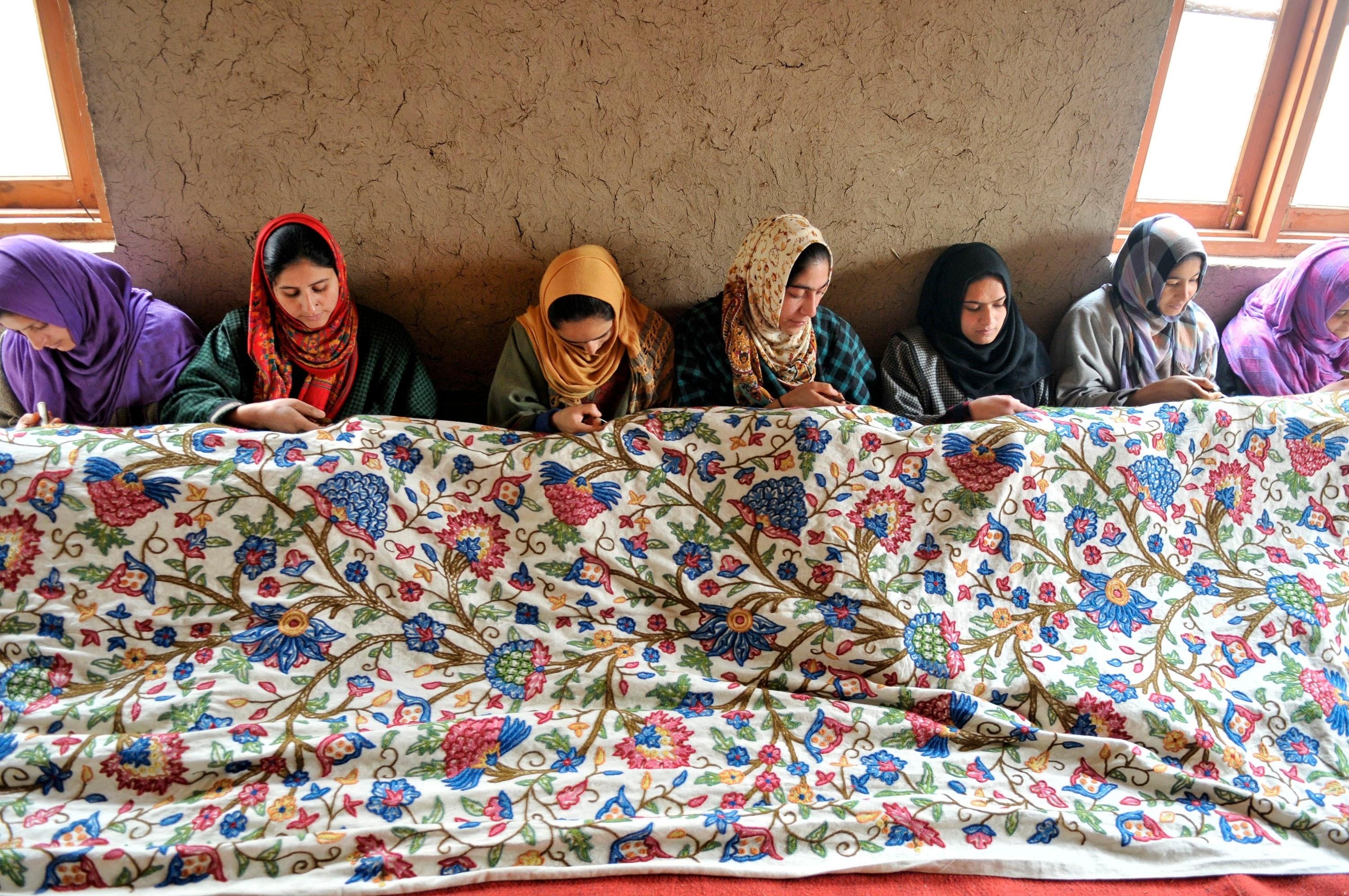
Let’s examine Turkish and Kashmiri embroidery together and learn about the similarities and differences in the details of this art in the two places
Kashmir and Turkey are world famous for their arts, cuisines, handicrafts, cultures and unique topographies. Kashmir’s embroidery holds one of the most significant places among the region's arts because of the great value originating from its uniqueness and richness. The state has an old and venerable tradition of embroidery and its distinctive features have attracted many people particularly from Western and European countries despite their varying tastes. Like Kashmiris, Turks also hold one of the oldest embroidery traditions from time immemorial. Kashmiri embroidery, which is locally called Kashida or Kashidakari, features some resemblances of famous Turkish embroidery.

The motifs used in Turkish and Kashmiri embroidery arts are richer than the ones used in other handicrafts. There are three common, basic patterns of embroidery in Kashmir. These motifs of almond, lotus and maple leaves are famous locally. But Kashmiris have also adopted a wide variety of designs such as fruits, flowers, birds and architecture such as apples, cherries, lilies, grapes, mangoes, tulips, saffron, sparrows, parrots, woodpeckers and houseboats/boats in modern day and the works produced using these motifs are popularly exported to the world, especially India. Turkey also has an extensive variety of motifs. Among them the main ones are geometric designs, animal figures, floral, fruit patterns such as tulips, cloves, roses and violets, along with houses, tents, boats, mountains and hills.
In both places, embroidery is categorized into groups according to the type of needle used and the embroidery style. In Turkey, there are many different types like süzeni (embroidery with a knitting needle on an embroidery frame), kasnak işi (embroidery made in a frame) and antep işi (embroidery indigenous to Turkey’s southeastern Gaziantep province). In Kashmir, these groups also include zalakdozi (embroidery with chain stitches), zardozi (heavy metal embroidery on fabric), crewel or aari (surface embroidery using wool) and sozni (embroidery with satin stitches).
The basic resemblance between Turkish and Kashmiri embroidery is that both are done manually. The handwork is delicate and time-consuming in the two places' works. Naturally, the works with elaborate embroidery are expensive, but they are ideal for important ceremonies. As a result, the popularity of both places’ embroidery continues to increase.
Today, the internet and social media have made it easy to purchase authentic embroidered products from Turkey and Kasmir. They offer a direct link between local artisans and their customers, helping the art of embroidery flourish in wider markets and fashion industries.
